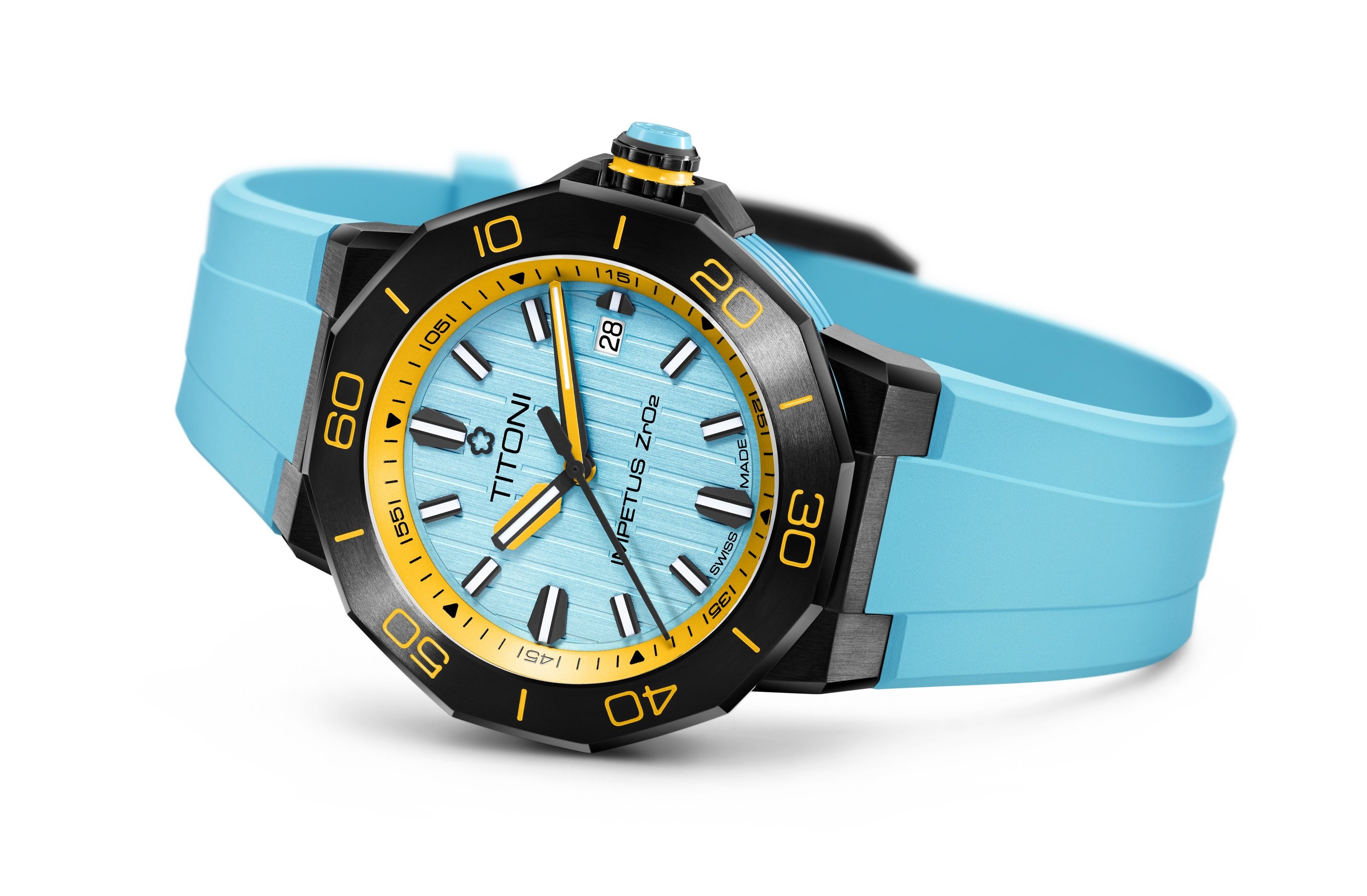ounded in 1919, Titoni has always had a unique profile in the Swiss watchmaking landscape. As our own extensive archives show, the company’s growth from the 1950s onwards was mainly focused on China, at a time when the country was still far from being the luxury Eldorado it has become, allowing Western luxury brands to generate outsized profits over the last two decades. While the Swiss brand was relatively unknown in the West, it established a high profile in China early on.
However, for three years, China was cut off from the world due to the pandemic. Titoni’s business suffered disproportionately compared with the Swiss watch industry as a whole, which was already seriously exposed. It became abundantly clear that the brand needed to build for a future outside China as well. Luckily, Titoni has some key advantages to offer. Interview.
-

- Titoni’s headquarters in Grenchen
Europa Star: What are Titoni’s values?
Olivier Schluep: Independence, the Swiss art of watchmaking, and tradition. We are one of the few family-run watchmaking companies active in a niche dominated by big groups. We are also one of the few with the in-house know-how to make mechanical movements and ensure autonomous production, from movement manufacture to watch assembly and final inspection. My brother Marc and I represent the fourth generation at the head of the company. I’m responsible for the European market, and Marc is responsible for the Asian market.
-

- The COSC-certified Seascoper 600 is one of the key models in Titoni’s contemporary range.
It’s true that you have the distinction of entering the Chinese market very early, back in the 1950s. In fact, you’re much better known there than in Switzerland. What is the current situation on the Chinese market?
It remains difficult, after several years marked by the pandemic. The recovery is more favourable to brands operating in the top end of the market and in the luxury segment, rather than in the mid-range segment. Consumers there seem to be less optimistic than in the past. China remains the most important market for Titoni, but we’re on the way to establishing a new presence in Europe.
-

- The company employs around fifty people in Grenchen and operates a major subsidiary in China.
How is that working out?
Reactions have been positive, but it takes time, and we have been working a lot through online sales before rolling out a physical network. If we lose 10% of sales in China, where we’ve been present for over 60 years, it’s difficult to make up for that with sales from elsewhere in the world. Of course, we knew that being so exposed to a single market could be risky.
-

- Made from 168 components, the T10 in-house automatic movement was developed by Titoni for its centenary in 2019. It has a three-day power reserve and is COSC-certified.
We used to see you every year at Baselworld. Its demise has certainly had a negative impact on your visibility. Will you be taking part in any more fairs?
We will consider it for the future. There have been many changes in the industry and in the structure of trade shows. Over the last decade, they had become less important for the brand.
-

- The Heritage line is inspired by the 1950s.
You developed an in-house movement in 2019. Is that effort bearing fruit?
It is an important selling point for us in our price segment and in the new markets we are exploring. The movement has been introduced in our Seascoper diving watch line, to which we’ve also added a new material: carbon. The sports watch is key in Europe and the United States, while our more classic lines, with their emphasis on timeless elegance, are more popular in China. Another important point is that we need to share our history even better through designs drawn from our heritage. Our Airmaster collection, for example, carries over 60 years of continuous history.
-

- With the launch of the Impetus CeramTech, Titoni is opening a new chapter in its history. The 43 mm model combines high-tech Swiss ceramics with stainless steel and vibrant colours.
Your new Impetus CeramTech model seems to be an important element in revitalising Titoni’s image.
Yes, its high-tech ceramics, contemporary polygonal bezel design, and bold colours make it a standout piece. This model also comes with two straps, and all development was carried out in-house, here in Grenchen, in collaboration with a Swiss expert in the field.
Is it true that, like the Swiss industry as a whole, you produce smaller volumes at a higher average price?
Yes, and that’s largely due to the manufacture movement found in the Seascoper 600 and Line 1919. However, we remain committed to the price segment from 1,000 to 3,000 francs. In that price range we could rely on external assembly, which would cost far less – and some people certainly recommend it! – but we want to remain “real” watchmakers. We choose to keep assembly in-house, as we have done historically, rather than being a “marketing” brand. This is the philosophy we need to communicate more effectively.























































